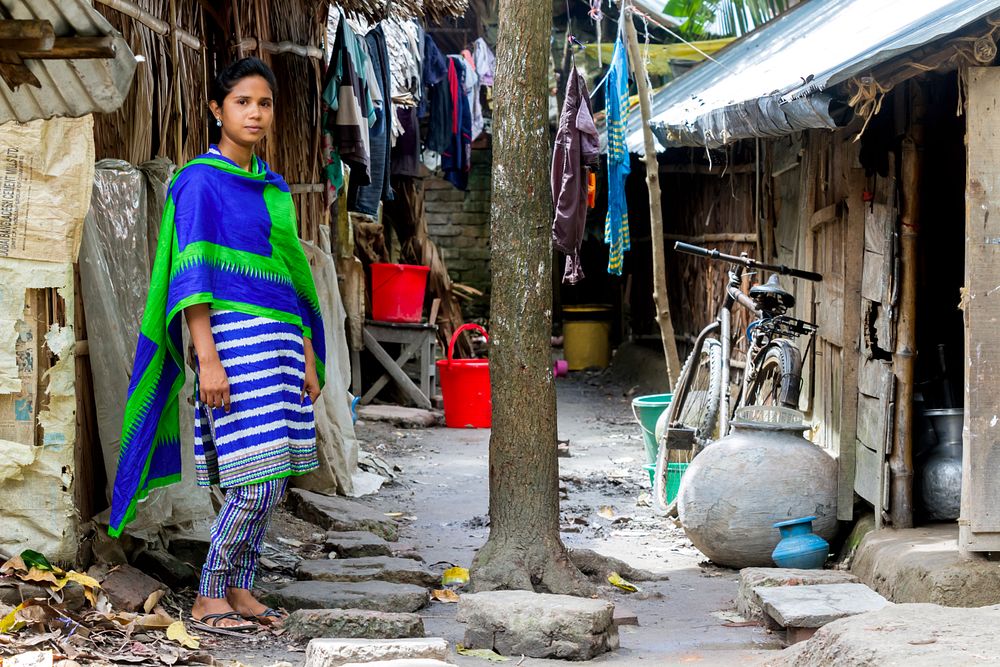Press release -
20 million people in Bangladesh dying for a drink
A new project in Bangladesh will reduce the number of people killed by drinking water contaminated by arsenic.
Every day, 20 million people drink water laced with dangerous levels of poisons. The vast majority don’t know they are doing so. It kills an estimated 43,000 people in Bangladesh every year, initially showing few, if any, symptoms but causing horrendous illnesses in later life.
Terminal illnesses caused by arsenic poisoning include liver, kidney, bladder and skin cancer, lung disease, nerve damage and cardiovascular disease.
The vast majority of people who suffer from arsenic poisoning live in poor rural communities and drink from shallow tube wells, built in the 1970s. Many of the wells have not been tested for arsenic and people using them have a choice between paying for bottled drinking water, which is prohibitively expensive for the vast majority of families, or take the risk of drinking from an untested source.
Practical Action launched its new project after staff witnessed people they work with battling symptoms of arsenic poisoning, but unaware of what was causing their illness, and powerless to do much about it when they were.
Dr. Utpal Kumar Debnath works in Satkhira, one of the worst affected districts of Bangladesh. He said: "There is severe crisis of safe drinking water here in Sathkhira. Salinity and the arsenic problem has the made the scarcity more intense.
“People are suffering here and I hope development agencies will work on this issue along with Government.”
Liza Akhter, 21, from Bagerhat said: “We are surrounded by water, but there is no water for drinking. This area is arsenic affected. If you collect water from the shallow wells then you would get arsenic water.
“I have heard there are people who have been suffering from diseases caused by arsenic. The thing about arsenic is you get poisoned slowly so you don’t know who has been affected around you already.”
The project will work with more than 10,000 people living in slum communities in the Satkhira and Bagerhat municipalities of Bangladesh.
It will involve the following components:
- Arsenic and iron removal plant installation to extract contaminants from the water
- Training and education to provide water point testing via trained technicians to ensure people can detect arsenic, plus community training on how to spot poisoning symptoms.
- Training in arsenic removal plant construction.
- Rainwater harvesting: a simple solution using guttering and storage containers to capture the monsoon rains and keep the water clean
Shallow tube wells were installed as part of a response to a severe lack of clean drinking water in Bangladesh, but Government and NGOs who built them were not aware the soil contained naturally occurring arsenic.
Officials expect to be dealing with an epidemic of arsenic-related illnesses over the next ten years as the impact of decades of drinking contaminated water takes its toll on thousands of Bangladeshis.
To find out more about the problem and the solutions available, go to practicalaction.org/dyingforadrink

Related links
Topics
- Pollution
Categories
- technology
- poverty
- poisoning
- world water week
- arsenic
- bangladesh
Practical Action uses technology to challenge poverty in developing countries.
Our strength is our approach. We find out what people are doing and help them to do it better. Through technology we enable poor communities to build on their skills and knowledge to produce sustainable and practical solutions - transforming their lives forever and protecting the world around them.
By doing this each year we help around a million people break out of the cycle of poverty ... for good.
